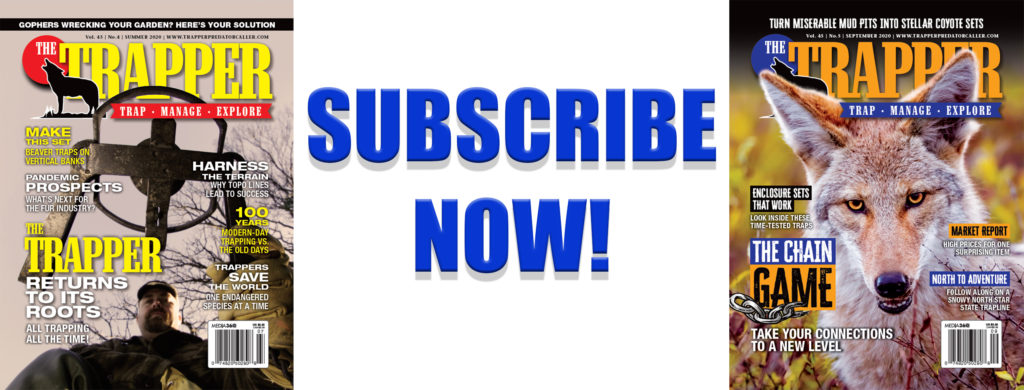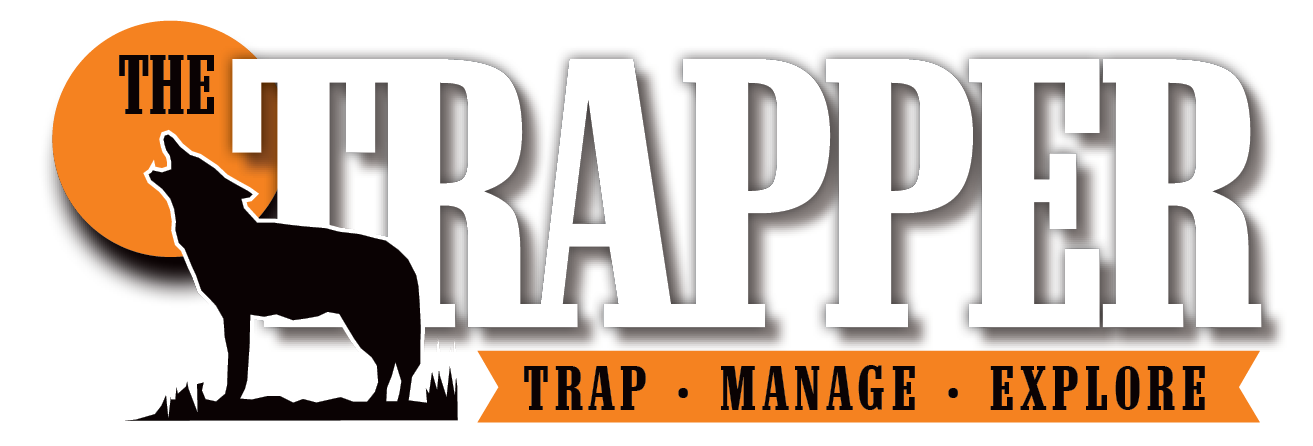By Serge Lariviére
The holiday season is over and most trappers in North America have already harvested the bulk of their skins for the season. Cold weather has arrived, and up in northern areas, snow makes traveling easier once the waterways are frozen and snow covers rocks and stumps in remote landscapes. For roadside trappers, snow seldom makes things easier, and for water trappers, snow — and especially ice — make everything more difficult. Whatever animals are left to catch have beautiful fur, and this is the time of quality — not quantity.
For this season, catching less is no drama because as we enter the year 2022, fur prices still sit below long-term averages, with still no big changes in the forecast. COVID-19 outbreaks linked to the Delta variant are increasing in many European and Asian cities, and travel restrictions, barriers or anything that is a hindrance to travel and public gatherings also have an impact on the fur market.
Fur coats are sold for warmth, yes, but in most countries they’re also a luxury symbol that only work when shown in public. No gatherings, no travel and no public events limit displays of wealth. Moreover, luxury thrives on stability, so whenever “normal life” is disrupted, luxury takes a back seat. Our industry still suffers from the uncertainty caused by COVID and this does not help recovery.
The impacts on our wild fur trade have been hard, and are still ongoing. For many species, we are seeing prices much below long-term averages. Beavers and raccoons are below $10 average, fishers and otters at $15 to $20, martens not even reaching $30 or $40, red foxes below $20, wild mink at $5, and Canada lynx much below $100 — a far cry from the top years of skins going for $500 or more!
The strongest item we have had for a long time, Western coyotes, is likely at the end of its popularity. We are seeing signs that suggest the end of this fashion craze worldwide, with companies slowing down or abandoning coyote fur in their parka trim. This is what kept many trappers in operations during the last six or seven years, and the incredible prices of the past have mellowed in the last few years. When the tide turns on a hot item, the first sign is the poorest goods start to drop first. In the case of coyotes, damaged skins, poor quality, bad colors (e.g., red coyotes) or poor sections (Southern coyotes being worst, Eastern coyotes being next) see price decreases first, and we are seeing this now. Top quality Western coyotes will continue to attract buyers this year again, but even that market will likely see a 10% to 15% decrease in price. Do not expect prices for coyotes to increase with time, so if you have them in your fur shed, sell them at the first opportunity, as this likely is on the verge of dropping back even more.
Beaver fur is tough to sell, and the harvest has probably never been any lower. Who wants to trap beavers for less than a $10 average? In many areas, the low pressure on beavers from fur trappers is reflected by the damage-complaint calls received and the contracts given to animal damage companies. For sure, the only way to make a profit from beaver trapping today is to wait for them to flood something valuable or cut beautiful trees on somebody’s property. The only good news from that is that the price of castoreum is higher than ever before, with prices of $90 to $110 USD per pound for the top quality and well-handled glands. On a 40- or 50-pound beaver, you are most likely going to receive more money from the glands than from the fur. Harvest and handle the glands well — this is the main financial reward you will get from a dead beaver caught where it does no damage.
If you are trapping private land, forestry land, or main road or railway networks, get paid or compensated somehow for your trapping efforts —whether it is cash, hunting or fishing privileges, access to other more valuable species, etc. Be creative. Beaver damage costs a lot of money — do not be shy to ask for compensation and explain that the fur itself is no pay for the work required. Investigate markets for meat (for human consumption or for dog food), or for carcasses (established black bear hunting outfitters often buy beaver carcasses for $5 to $10 each). Leather from the tails is a very limited market, but ask around — you never know who might consider giving a dollar or two for the tails.
I always ranked beaver trapping as the most dangerous of all types of fur trapping: big traps, ice, deep water, sharp stumps, heavy animals, mud, snow, ice chisels, chainsaws, etc. And I now have no trouble listing them among the least profitable of any time of fur trapping — which breaks my heart because it’s fun when you have the animals in abundance in beautiful landscapes! If you choose to go, make it a family trip, take friends along, harvest fewer, but enjoy it more. Spend the evening at water’s edge watching them, or sit and watch them get caught “live” in front of you in the evening! It is still fun, just not very profitable anymore.
Muskrats should be okay — maybe even improve in price as the supply of ranch mink on the market slowly decreases and prices seem to stabilize, or even advance slightly. I expect this item to be one of the first to recover when the dust finally settles and the wind turns back in our favor again.
Winter will set in, and we will now watch to see what the start of the 2022 selling season will bring. The next international fur auction sale will be held in North Bay, Canada, at Fur Harvesters Auctions (www.furharvesters.com) on March 24-28, 2022. Hopefully by then, the pandemic will have been controlled enough to allow normal crowds of international buyers to come in. Big prices at the auction in North Bay would drive the country buyers’ prices up also, so a good auction in North Bay should be our wish for the start of 2022!



